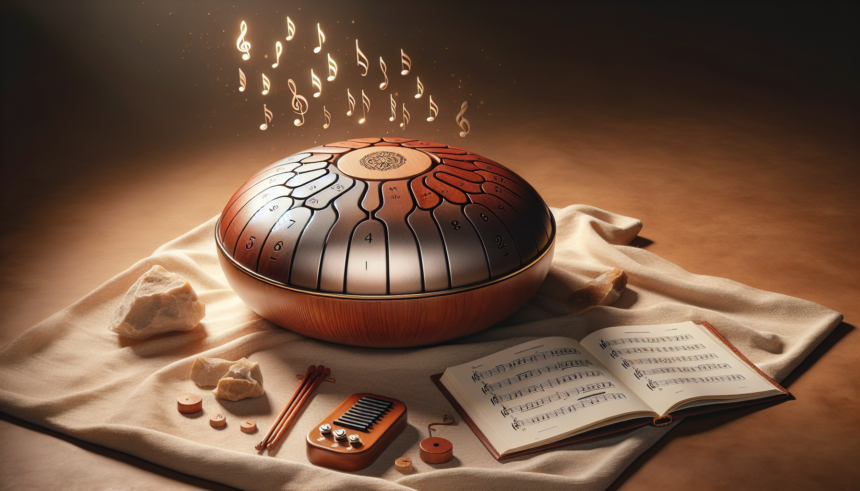Introduction to Handpans
Handpans are captivating, melodic percussion instruments that have taken the music world by storm. Known for their ethereal and soothing sounds, handpans are played by striking the metal surface with the hands, producing a rich variety of tones. While they might appear simple, handpans possess a depth that can be explored through their different modes. Understanding these modes can greatly enhance your appreciation and ability to play the handpan.
What are Handpan Modes?
In music theory, a mode is a type of scale characterized by a specific sequence of intervals between its notes. Handpan modes are essentially different scales that create varying emotional and musical atmospheres. These modes can range from minor scales, which typically evoke a somber or reflective mood, to major scales, which often sound bright and joyful. By learning the different modes, players can expand their musical vocabulary and express a wider array of emotions.
Popular Handpan Modes
Handpans are generally tuned to a particular scale or mode, with each note on the instrument corresponding to a note in that scale. Below are some popular handpan modes that beginners might encounter:
1. D Minor (Celtic Minor, Dorian)
The D Minor scale is one of the most popular handpan modes. It is known for its melancholic and introspective sound, making it ideal for meditative and reflective music.
D, E, F, G, A, Bb, C, D
2. C Major
The C Major scale is bright and joyful, making it a favorite for happy and uplifting compositions. It’s a go-to mode for beginners due to its straightforward layout and accessibility.
C, D, E, F, G, A, B, C
3. Ake Bono
The Ake Bono scale originates from Japan and offers a pentatonic sound. It’s often used for creating a mysterious, meditative, and serene musical atmosphere.
D, E, F, A, Bb, D
4. Integral
The Integral scale combines elements of minor and major scales, giving it a rich and versatile sound. It is suitable for a variety of musical styles and emotions.
D, G, A, C, D, E, F#, G
5. Pygmy Scale
The Pygmy scale is well-suited for evocative and earthy music. Its unique sequence of notes produces a primal and organic sound.
A, E, F, A, C, D, E, G
How to Choose the Right Mode
Choosing the right mode for your handpan involves considering your musical goals, the emotions you wish to convey, and your personal preference. Here are some tips to help you decide:
1. Listen to Different Modes
Before committing to a particular mode, listen to recordings of handpans tuned to different scales. This will give you a sense of the emotional and musical qualities each mode possesses.
2. Define Your Musical Style
Consider the type of music you enjoy playing or composing. If you prefer meditative or reflective music, a minor scale like D Minor might suit you. If you enjoy bright and uplifting tunes, C Major could be a better fit.
3. Experiment with Different Scales
If possible, try out handpans tuned to different modes. Hands-on experience is invaluable for understanding how a particular scale feels and responds to your playing style.
4. Seek Advice from Experienced Players
Joining a community of handpan enthusiasts can provide you with insights and recommendations. Experienced players can share their experiences and help guide you in selecting a mode that matches your musical vision.
Practicing Handpan Modes
Once you’ve chosen a mode, learning how to practice effectively is crucial. Here are some steps to help you get started:
1. Start with Simple Patterns
Begin by practicing simple patterns and rhythms. Focus on getting clean and consistent sound from each note. This will help you develop a good foundational technique.
2. Explore Melodic Phrases
Experiment with creating short melodic phrases within the mode. Play around with different combinations of notes to discover unique melodies and riffs.
3. Use a Metronome
Practicing with a metronome can help you improve your timing and rhythm. Start with a slow tempo and gradually increase the speed as you become more comfortable.
4. Record Your Practice Sessions
Recording your practice sessions allows you to listen back and identify areas for improvement. It also helps track your progress over time.
5. Explore Dynamics and Expression
Experiment with playing notes at different volumes and with varying intensities. Use dynamics to add emotional depth and expression to your playing.
6. Learn from Others
Watch tutorials, attend workshops, and listen to performances by experienced handpan players. Observing different techniques and styles can inspire and inform your own playing.
Conclusion
Understanding and exploring handpan modes is a crucial step for any beginner looking to deepen their connection with this mesmerizing instrument. From the reflective tones of D Minor to the uplifting melodies of C Major, each mode offers a unique palette of sounds and emotions. By listening to different modes, defining your musical style, and experimenting with scales, you can find the perfect mode that resonates with you. Remember, practice is key, so take your time to develop your skills and explore the depths of what the handpan has to offer.
FAQs
Q1: What is a handpan?
A1: A handpan is a melodic percussion instrument made of steel, played by hand. It produces a variety of tones and is known for its soothing, ethereal sound.
Q2: What is a mode in the context of handpans?
A2: A mode is a type of scale characterized by a specific sequence of intervals between its notes. Handpan modes are different scales that create various musical atmospheres.
Q3: How do I choose the right handpan mode for me?
A3: To choose the right mode, listen to recordings of handpans tuned to different scales, consider your musical style, experiment with different modes, and seek advice from experienced players.
Q4: Are some handpan modes easier for beginners?
A4: Yes, modes like C Major are often considered easier for beginners due to their straightforward layout and accessible, familiar sound.
Q5: Can I change the mode of a handpan after purchasing it?
A5: Generally, handpans are tuned to a specific mode and cannot be retuned to a different mode without professional help. It’s crucial to choose a mode that aligns well with your musical goals from the start.





